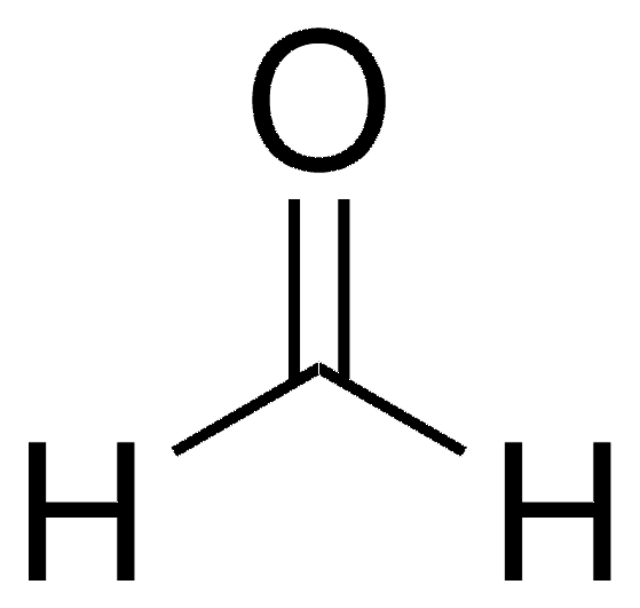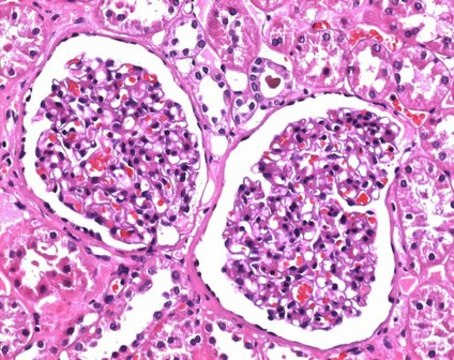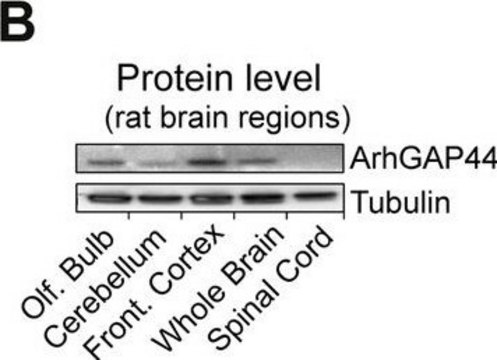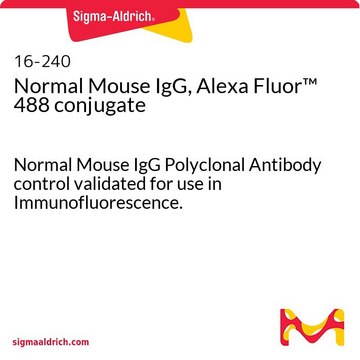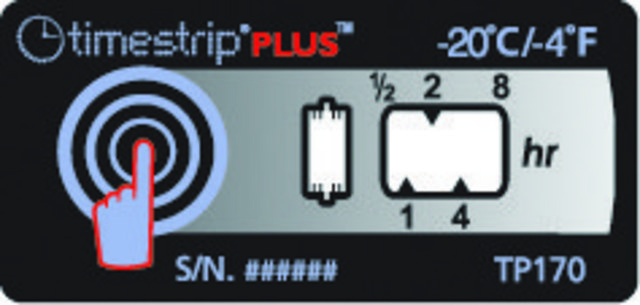推荐产品
生物来源
rabbit
质量水平
偶联物
unconjugated
抗体形式
affinity isolated antibody
抗体产品类型
primary antibodies
克隆
polyclonal
产品线
Prestige Antibodies® Powered by Atlas Antibodies
表单
buffered aqueous glycerol solution
种属反应性
human
增强验证
orthogonal RNAseq
Learn more about Antibody Enhanced Validation
技术
immunohistochemistry: 1:50- 1:200
免疫原序列
LECRVKHDPSLKLTVSWLKDDEPLYIGNRMKKEDDSLTIFGVAERDQGSYTCVASTELDQDLAKAYLTVLADQATPTNRLAALPKGRPDRPRDLELTDLAERSVRLTWIPGDANNSPITDYVVQFE
UniProt登记号
运输
wet ice
储存温度
−20°C
靶向翻译后修饰
unmodified
基因信息
human ... NFASC(23114)
一般描述
NFASC (neurofascin) is a member of the L1 family of CAMs (cell adhesion molecules), which in turn is a part of the immunoglobulin (Ig) superfamily of proteins. It is mainly expressed in the nervous system. The members of L1 family contain six Ig-like domains and four to five Fn (fibronectin) domains in their extracellular region. Their cytoplasmic domain contains a putative conserved motif (FIG(Q/A)Y) that links the proteins to cytoplasm and also facilitates the binding to ankyrin. This protein has multiple spliced isoforms, with two major isoforms called NF155 of 155kDa and NF186 of 186kDa. These isoforms are expressed in the glia and axons respectively.
免疫原
Neurofascin precursor recombinant protein epitope signature tag (PrEST)
应用
All Prestige Antibodies Powered by Atlas Antibodies are developed and validated by the Human Protein Atlas (HPA) project and as a result, are supported by the most extensive characterization in the industry.
The Human Protein Atlas project can be subdivided into three efforts: Human Tissue Atlas, Cancer Atlas, and Human Cell Atlas. The antibodies that have been generated in support of the Tissue and Cancer Atlas projects have been tested by immunohistochemistry against hundreds of normal and disease tissues and through the recent efforts of the Human Cell Atlas project, many have been characterized by immunofluorescence to map the human proteome not only at the tissue level but now at the subcellular level. These images and the collection of this vast data set can be viewed on the Human Protein Atlas (HPA) site by clicking on the Image Gallery link. We also provide Prestige Antibodies® protocols and other useful information.
The Human Protein Atlas project can be subdivided into three efforts: Human Tissue Atlas, Cancer Atlas, and Human Cell Atlas. The antibodies that have been generated in support of the Tissue and Cancer Atlas projects have been tested by immunohistochemistry against hundreds of normal and disease tissues and through the recent efforts of the Human Cell Atlas project, many have been characterized by immunofluorescence to map the human proteome not only at the tissue level but now at the subcellular level. These images and the collection of this vast data set can be viewed on the Human Protein Atlas (HPA) site by clicking on the Image Gallery link. We also provide Prestige Antibodies® protocols and other useful information.
生化/生理作用
The NF155 isoform of NFASC (neurofascin) acts as the ligand for CNTN1/CASPR1 (contactin 1/ contactin-associated protein 1) complex at the paranode of glia, where it plays an essential role in myelination and the functional assembly of node of Ranvier. Inactivation of this isoform in mice results in severe demyelinating neuropathy, with highly decreased conduction velocities. It is also accompanied with degeneration of Purkinje neurons, which results in ataxia and prominent tremor. Autoantibodies to this protein are linked to a subtype of chronic inflammatory demyelinating polyradiculoneuropathy (CIDP). Studies show that antibodies against NFASC result in accumulation of complement proteins, axonal injury and the exacerbation of multiple sclerosis.
特点和优势
Prestige Antibodies® are highly characterized and extensively validated antibodies with the added benefit of all available characterization data for each target being accessible via the Human Protein Atlas portal linked just below the product name at the top of this page. The uniqueness and low cross-reactivity of the Prestige Antibodies® to other proteins are due to a thorough selection of antigen regions, affinity purification, and stringent selection. Prestige antigen controls are available for every corresponding Prestige Antibody and can be found in the linkage section.
Every Prestige Antibody is tested in the following ways:
Every Prestige Antibody is tested in the following ways:
- IHC tissue array of 44 normal human tissues and 20 of the most common cancer type tissues.
- Protein array of 364 human recombinant protein fragments.
联系
Corresponding Antigen APREST71582
外形
Solution in phosphate-buffered saline, pH 7.2, containing 40% glycerol and 0.02% sodium azide
法律信息
Prestige Antibodies is a registered trademark of Merck KGaA, Darmstadt, Germany
免责声明
Unless otherwise stated in our catalog or other company documentation accompanying the product(s), our products are intended for research use only and are not to be used for any other purpose, which includes but is not limited to, unauthorized commercial uses, in vitro diagnostic uses, ex vivo or in vivo therapeutic uses or any type of consumption or application to humans or animals.
未找到合适的产品?
试试我们的产品选型工具.
储存分类代码
10 - Combustible liquids
WGK
WGK 1
个人防护装备
Eyeshields, Gloves, multi-purpose combination respirator cartridge (US)
法规信息
新产品
Emily K Mathey et al.
The Journal of experimental medicine, 204(10), 2363-2372 (2007-09-12)
Axonal injury is considered the major cause of disability in patients with multiple sclerosis (MS), but the underlying effector mechanisms are poorly understood. Starting with a proteomics-based approach, we identified neurofascin-specific autoantibodies in patients with MS. These autoantibodies recognize the
Heli Liu et al.
The Journal of biological chemistry, 286(1), 797-805 (2010-11-05)
The L1 family neural cell adhesion molecules play key roles in specifying the formation and remodeling of the neural network, but their homophilic interaction that mediates adhesion is not well understood. We report two crystal structures of a dimeric form
Luis Querol et al.
Neurology, 82(10), 879-886 (2014-02-14)
To describe the frequency of antibodies against neurofascin in chronic inflammatory demyelinating polyradiculoneuropathy (CIDP) and the associated clinical features. Immunocytochemistry was used to identify antibodies to neurofascin 155 (NF155) and 186. Serum reactivity with paranodes and brain tissue was tested
Yuji Nishimura et al.
Brain pathology (Zurich, Switzerland), 33(3), e13131-e13131 (2022-11-12)
The pathological hallmark of multiple system atrophy (MSA) is aberrant accumulation of phosphorylated α-synuclein in oligodendrocytes, forming glial cytoplasmic inclusions (GCIs). Extensive demyelination occurs particularly in the olivopontocerebellar and striatonigral pathways, but its precise mechanism remains elusive. Glial connexins (Cxs)
我们的科学家团队拥有各种研究领域经验,包括生命科学、材料科学、化学合成、色谱、分析及许多其他领域.
联系技术服务部门

